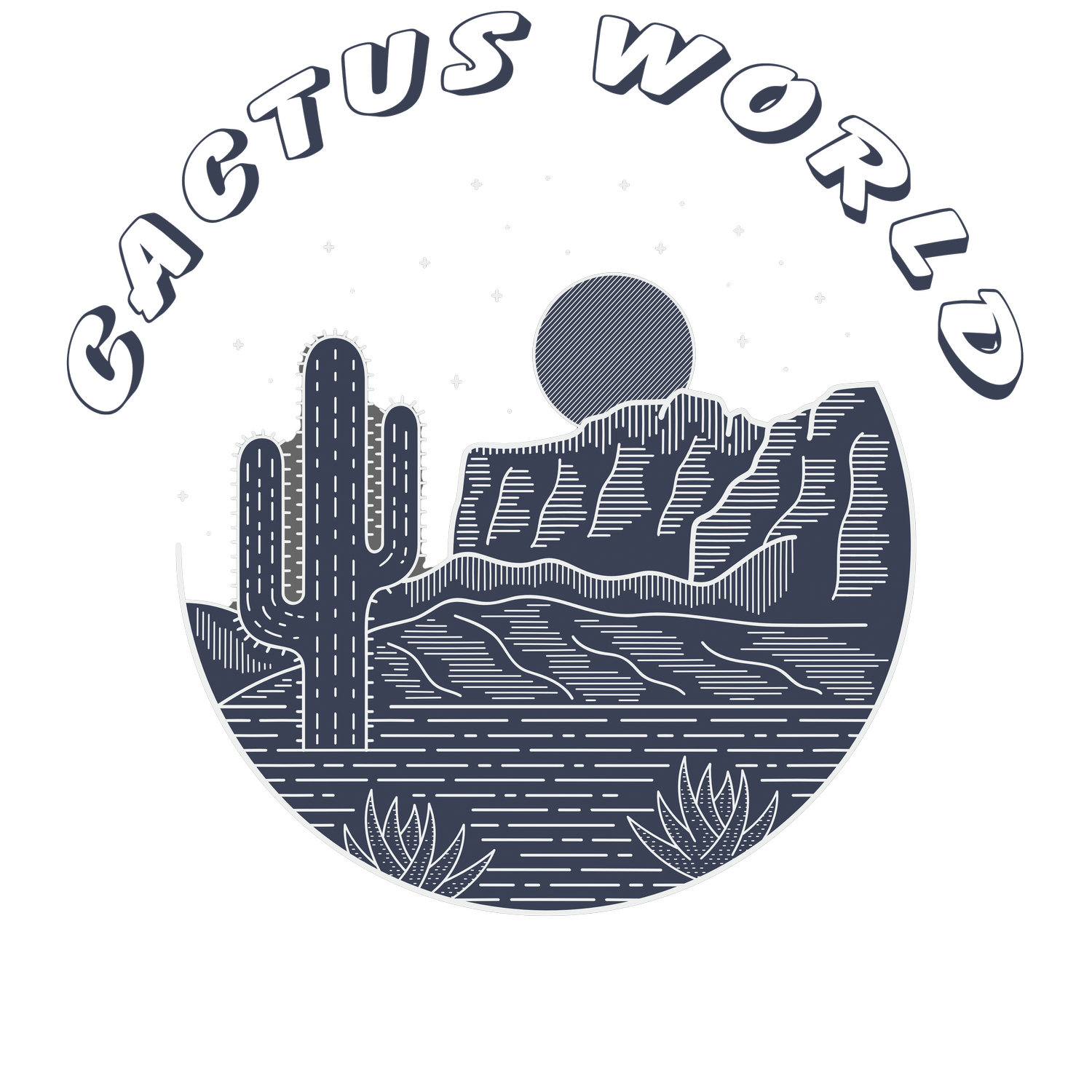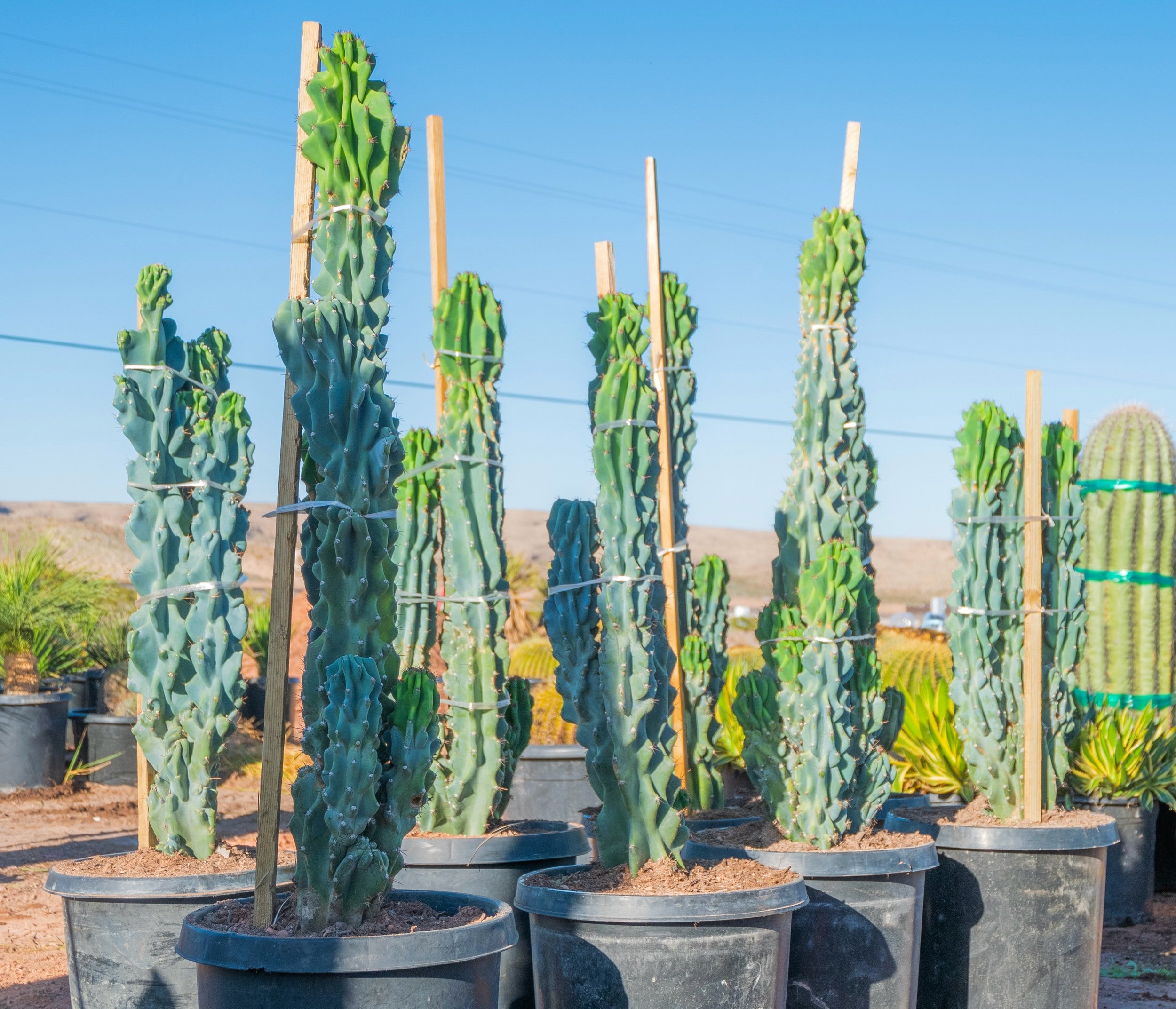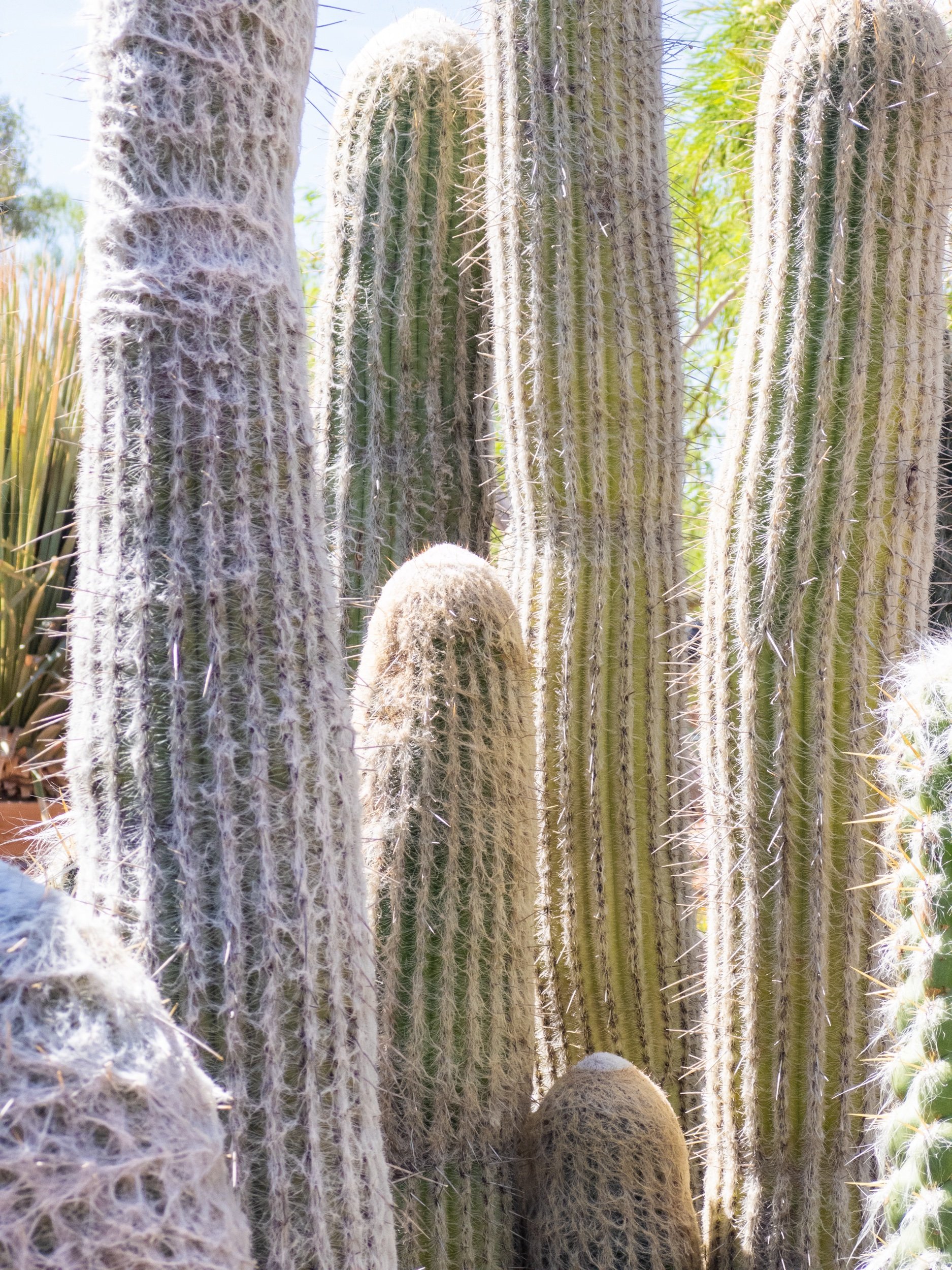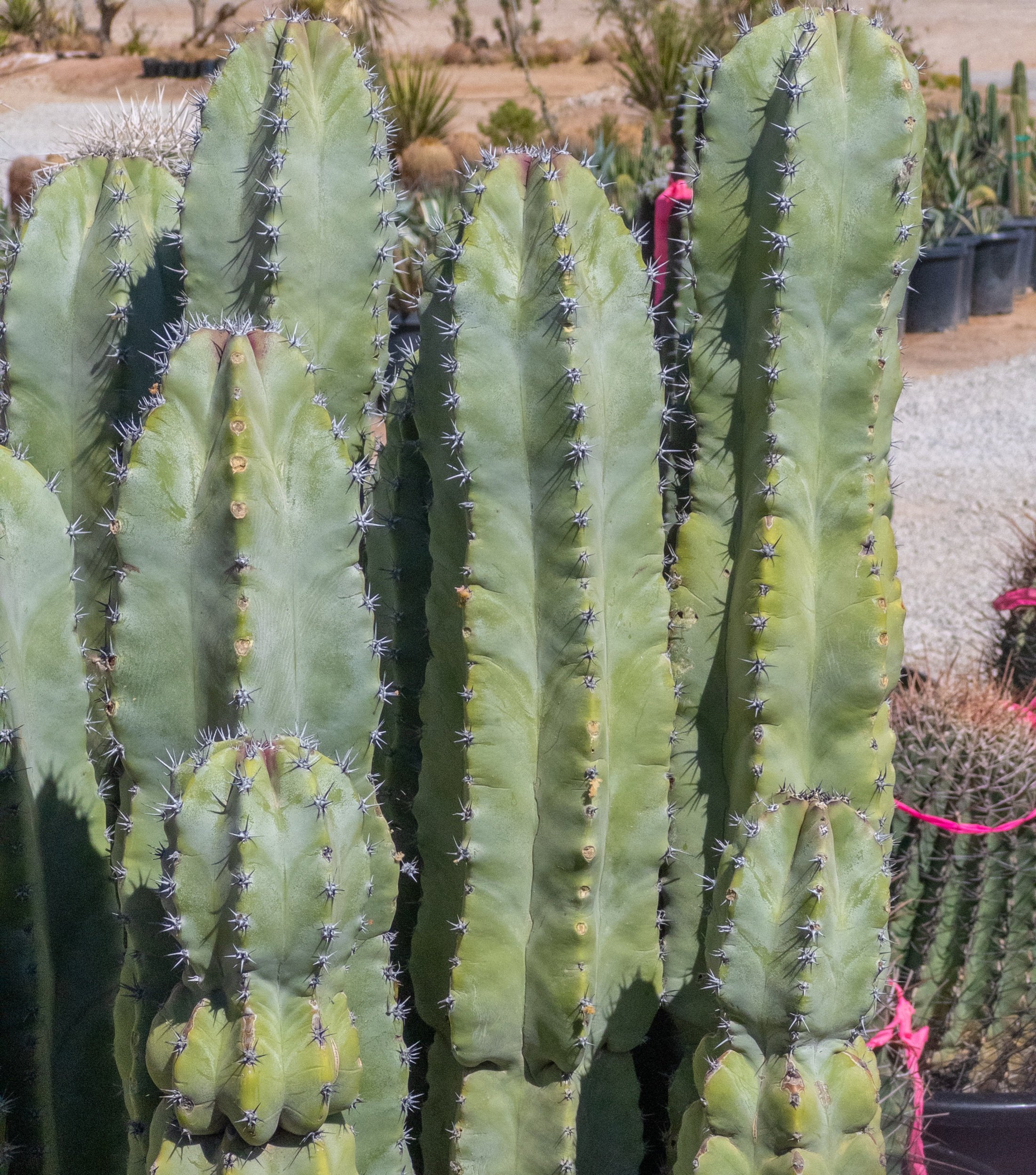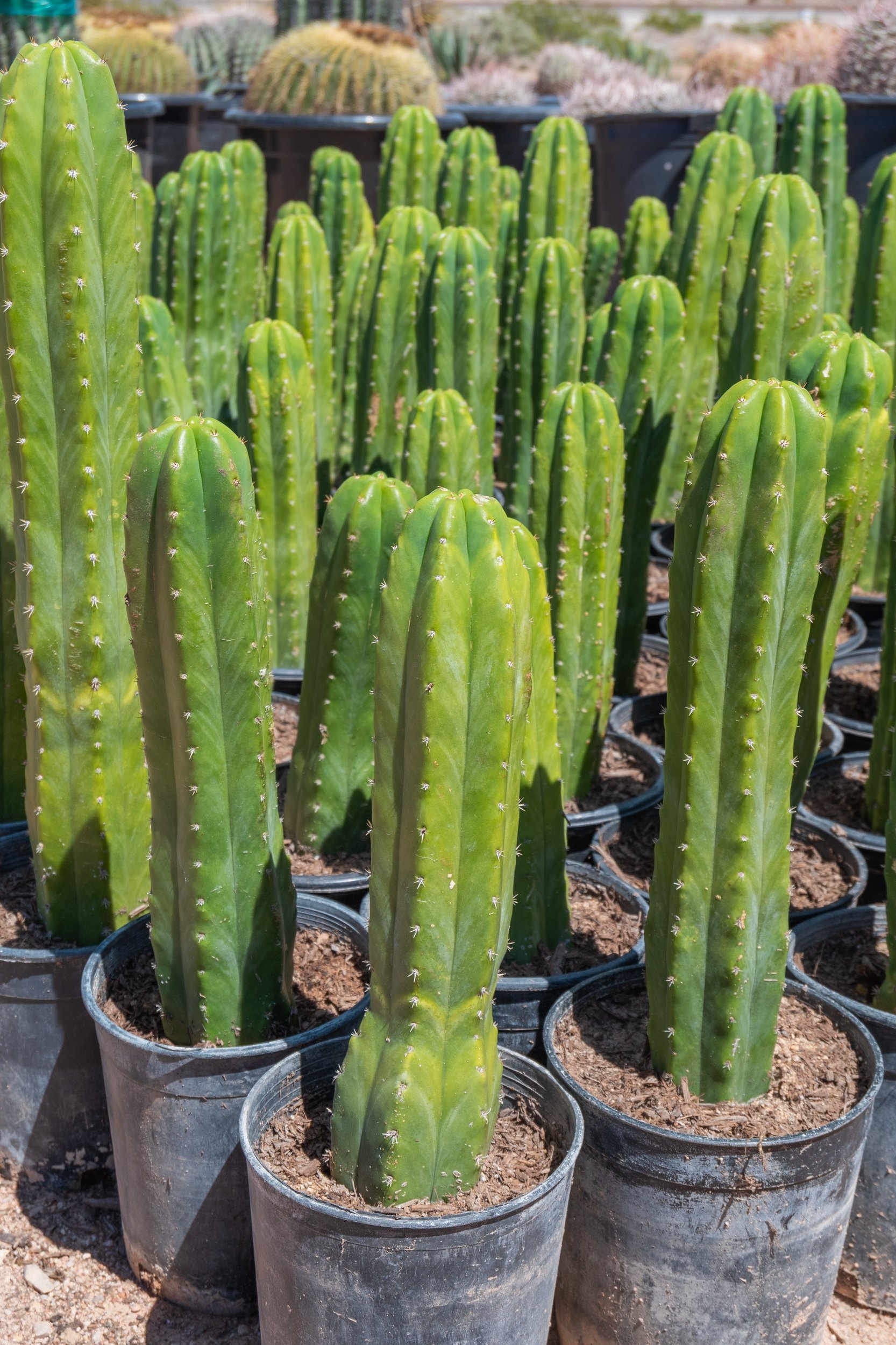 Image 1 of 4
Image 1 of 4

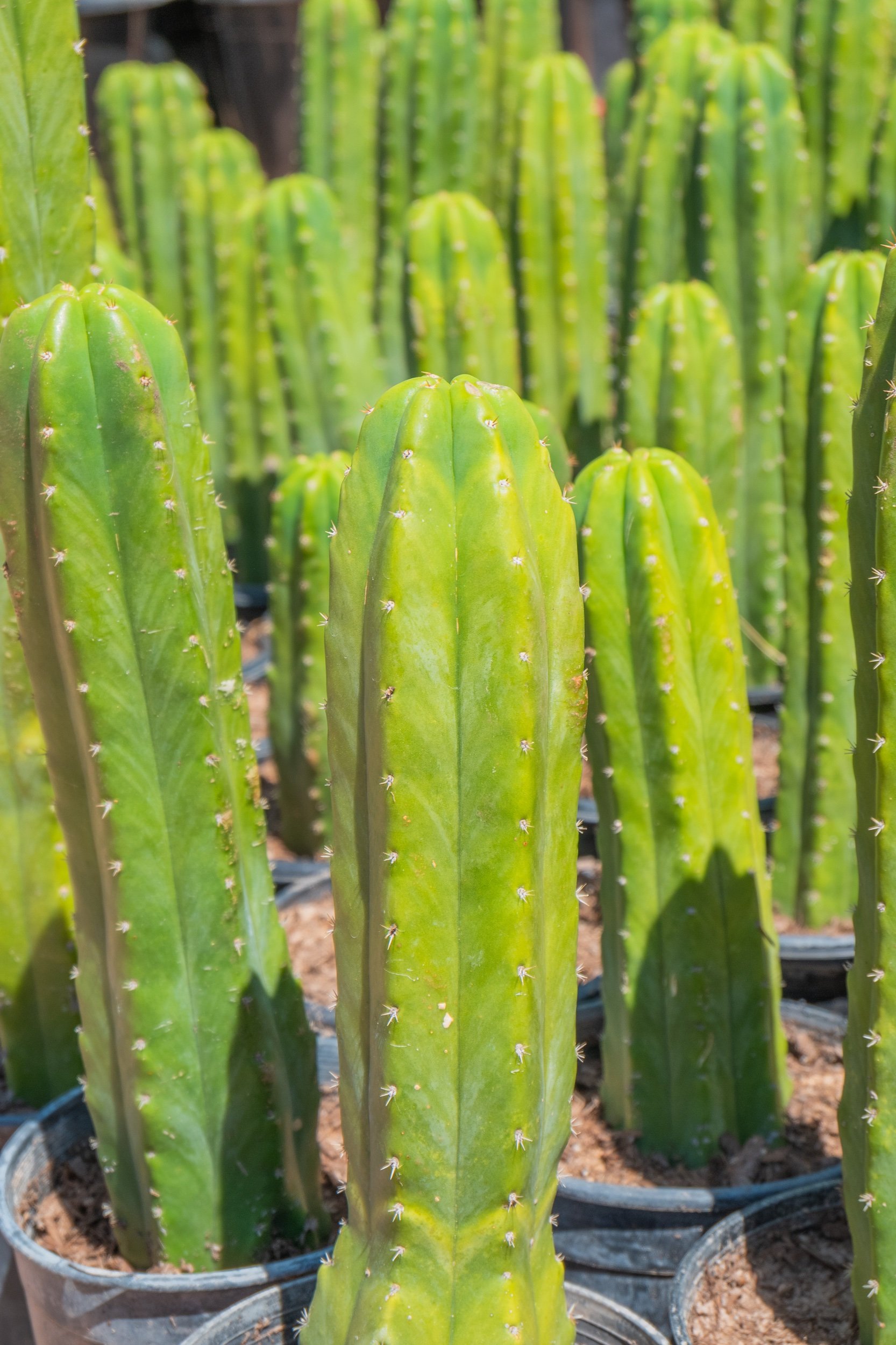 Image 2 of 4
Image 2 of 4

 Image 3 of 4
Image 3 of 4

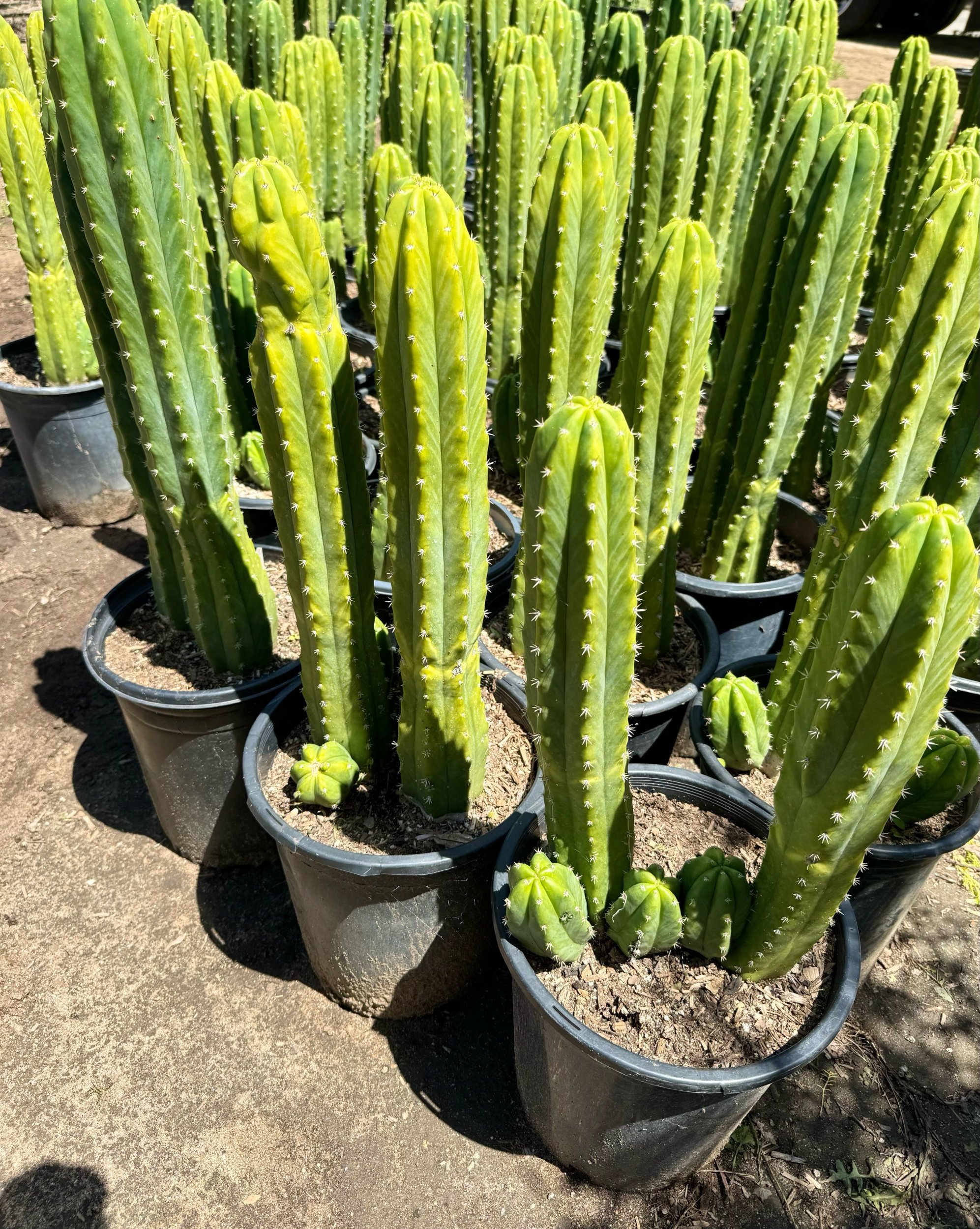 Image 4 of 4
Image 4 of 4





San Pedro Cactus
San Pedro, scientifically known as Trichocereus pachanoi, is a species of cactus native to the Andes mountains in South America. Here's a detailed overview of its characteristics and care requirements:
Characteristics: San Pedro is a columnar cactus that can grow to impressive heights, reaching up to 20 feet tall in its native habitat. It features multiple ribbed stems that are typically bluish-green in color and covered in clusters of small spines. The stems are cylindrical and can branch out as the plant matures. San Pedro produces large, white, funnel-shaped flowers that bloom at night and are pollinated by moths and bats.
Cold Hardiness: San Pedro is native to high-altitude regions of the Andes mountains, where it is adapted to cold temperatures. It is generally hardy to USDA hardiness zones 9b to 11, capable of withstanding temperatures as low as 20°F (-6°C) when provided with proper protection from frost and freezing temperatures.
Soil and Water Preferences: San Pedro thrives in well-draining soil with good aeration. A cactus or succulent potting mix works well, or a mix of sandy or gravelly soil with organic matter. Water deeply but infrequently, allowing the soil to dry out between waterings to prevent root rot. San Pedro is drought-tolerant and can withstand periods of dryness, but it appreciates occasional deep watering during the growing season.
Sunlight Needs: San Pedro prefers full sunlight and thrives in bright, direct sunlight. Provide it with at least 6 to 8 hours of direct sunlight per day for optimal growth and health. However, it can also tolerate partial shade, especially during the hottest part of the day in warmer climates.
How to Take Care of it:
Watering: Water sparingly, allowing the soil to dry out between waterings. Avoid overwatering, especially during the winter months when the plant is dormant.
Sunlight: Place in a location that receives plenty of sunlight, but protect from intense afternoon sun if necessary.
Temperature: Protect from frost and freezing temperatures, especially in colder climates. Consider bringing indoors or providing winter protection if temperatures drop below freezing.
Soil: Ensure the soil is well-draining to prevent waterlogged conditions, which can lead to root rot.
Fertilizing: San Pedro generally does not require fertilization, but you can apply a balanced fertilizer diluted to half strength during the growing season (spring and summer) to promote healthy growth.
With proper care and attention to its needs, San Pedro will reward you with its impressive size and beautiful nocturnal blooms.
San Pedro, scientifically known as Trichocereus pachanoi, is a species of cactus native to the Andes mountains in South America. Here's a detailed overview of its characteristics and care requirements:
Characteristics: San Pedro is a columnar cactus that can grow to impressive heights, reaching up to 20 feet tall in its native habitat. It features multiple ribbed stems that are typically bluish-green in color and covered in clusters of small spines. The stems are cylindrical and can branch out as the plant matures. San Pedro produces large, white, funnel-shaped flowers that bloom at night and are pollinated by moths and bats.
Cold Hardiness: San Pedro is native to high-altitude regions of the Andes mountains, where it is adapted to cold temperatures. It is generally hardy to USDA hardiness zones 9b to 11, capable of withstanding temperatures as low as 20°F (-6°C) when provided with proper protection from frost and freezing temperatures.
Soil and Water Preferences: San Pedro thrives in well-draining soil with good aeration. A cactus or succulent potting mix works well, or a mix of sandy or gravelly soil with organic matter. Water deeply but infrequently, allowing the soil to dry out between waterings to prevent root rot. San Pedro is drought-tolerant and can withstand periods of dryness, but it appreciates occasional deep watering during the growing season.
Sunlight Needs: San Pedro prefers full sunlight and thrives in bright, direct sunlight. Provide it with at least 6 to 8 hours of direct sunlight per day for optimal growth and health. However, it can also tolerate partial shade, especially during the hottest part of the day in warmer climates.
How to Take Care of it:
Watering: Water sparingly, allowing the soil to dry out between waterings. Avoid overwatering, especially during the winter months when the plant is dormant.
Sunlight: Place in a location that receives plenty of sunlight, but protect from intense afternoon sun if necessary.
Temperature: Protect from frost and freezing temperatures, especially in colder climates. Consider bringing indoors or providing winter protection if temperatures drop below freezing.
Soil: Ensure the soil is well-draining to prevent waterlogged conditions, which can lead to root rot.
Fertilizing: San Pedro generally does not require fertilization, but you can apply a balanced fertilizer diluted to half strength during the growing season (spring and summer) to promote healthy growth.
With proper care and attention to its needs, San Pedro will reward you with its impressive size and beautiful nocturnal blooms.
San Pedro, scientifically known as Trichocereus pachanoi, is a species of cactus native to the Andes mountains in South America. Here's a detailed overview of its characteristics and care requirements:
Characteristics: San Pedro is a columnar cactus that can grow to impressive heights, reaching up to 20 feet tall in its native habitat. It features multiple ribbed stems that are typically bluish-green in color and covered in clusters of small spines. The stems are cylindrical and can branch out as the plant matures. San Pedro produces large, white, funnel-shaped flowers that bloom at night and are pollinated by moths and bats.
Cold Hardiness: San Pedro is native to high-altitude regions of the Andes mountains, where it is adapted to cold temperatures. It is generally hardy to USDA hardiness zones 9b to 11, capable of withstanding temperatures as low as 20°F (-6°C) when provided with proper protection from frost and freezing temperatures.
Soil and Water Preferences: San Pedro thrives in well-draining soil with good aeration. A cactus or succulent potting mix works well, or a mix of sandy or gravelly soil with organic matter. Water deeply but infrequently, allowing the soil to dry out between waterings to prevent root rot. San Pedro is drought-tolerant and can withstand periods of dryness, but it appreciates occasional deep watering during the growing season.
Sunlight Needs: San Pedro prefers full sunlight and thrives in bright, direct sunlight. Provide it with at least 6 to 8 hours of direct sunlight per day for optimal growth and health. However, it can also tolerate partial shade, especially during the hottest part of the day in warmer climates.
How to Take Care of it:
Watering: Water sparingly, allowing the soil to dry out between waterings. Avoid overwatering, especially during the winter months when the plant is dormant.
Sunlight: Place in a location that receives plenty of sunlight, but protect from intense afternoon sun if necessary.
Temperature: Protect from frost and freezing temperatures, especially in colder climates. Consider bringing indoors or providing winter protection if temperatures drop below freezing.
Soil: Ensure the soil is well-draining to prevent waterlogged conditions, which can lead to root rot.
Fertilizing: San Pedro generally does not require fertilization, but you can apply a balanced fertilizer diluted to half strength during the growing season (spring and summer) to promote healthy growth.
With proper care and attention to its needs, San Pedro will reward you with its impressive size and beautiful nocturnal blooms.
